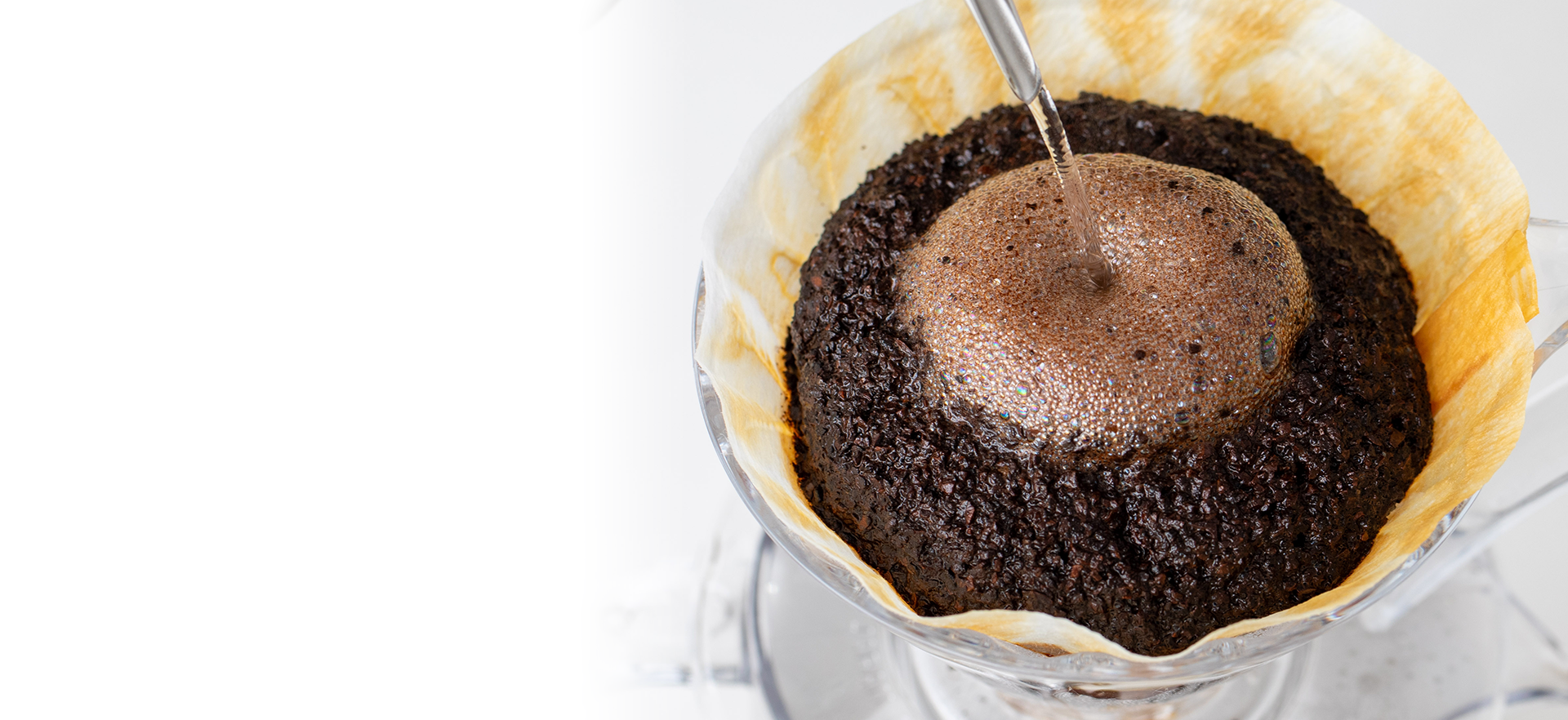
CAFEC Osmotic Flow
CAFEC
Osmotic Flow
What is CAFEC Osmotic Flow?
CAFEC Osmotic Flow refers to the CAFEC brewing theory to cause continuous diffusion occurred by “concentration gradient”; the key point is to let water continuously pass through filtration paths between coffee powders. That is, by continuously passing through, a concentration gradient is constantly generated, allowing more of the good coffee ingredients to dissolve in water.
Once the water finishes passing through the coffee, the next shot of water should be slowly poured in again. By repeating this simple operation, a large concentration gradient is always generated between the coffee powder and the water. Then since smooth diffusion continues to occur, that more of the delicious ingredients dissolve quickly into the liquid.
On the other hand, in full-immersion brewing method, the coffee powder is immersed in water for a certain period of time, so the concentration gradient that occurs at the beginning gradually slows down in the latter half of the extraction process. So, by this full-immersion brewing, both fast and slow diffusing ingredients are almost entirely extracted.
Both extraction methods have their own characteristics, but CAFEC recommends the “Osmotic Flow” because it allows anyone to easily brew delicious coffee.
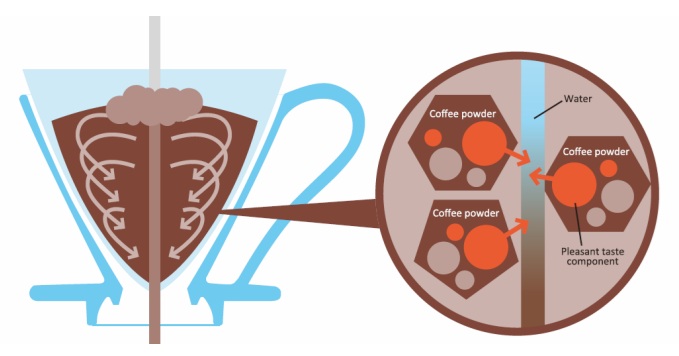
What is diffusion occurred by concentration gradient?
Diffusion occurred by concentration gradient refers to the phenomenon that when liquids of different concentrations are next to each other, the ingredients of the liquid with higher-density tries to dissolve into the liquid with lower-density until both the concentration becomes same.
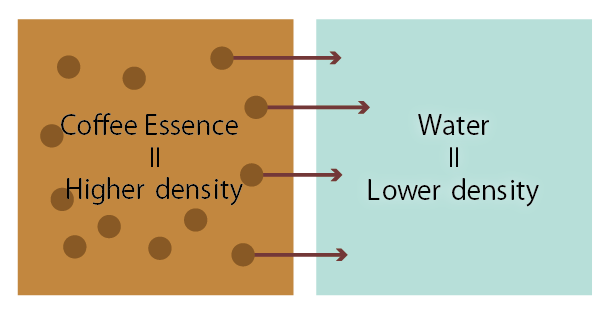
What is a honeycomb structure (porous structure)?
-
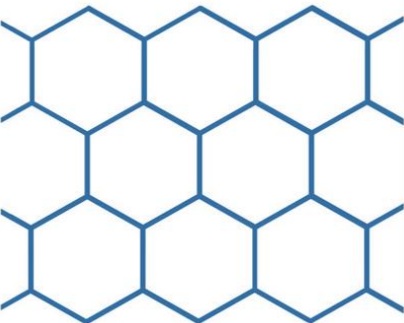
-
The internal structure of coffee powder is a “honeycomb structure” with numerous cavities. Generally, when brewing coffee, the first step is a process called “blooming,” in which first shot of water is spread evenly over the entire coffee bed. The ideal amount of water for the blooming is not too much, and this process shall be about 30 seconds. By steeping the coffee bed thoroughly, water can penetrate in the countless small spaces inside the coffee powder. Thanks to the capillary phenomenon, it allows the water to permeate into the interior of the spaces. During this process, much gas is generated by chemical changes occurred in the honeycomb structure of the coffee powder. Thanks to the gas, each coffee powder expands fully. When the water seeps into the spaces, the coffee ingredients on the walls of the coffee powder dissolve into the water by diffusion occurred by concentration gradient, and coffee essence is kept inside the powder. This means it is ready for extraction. After the “blooming” process, next shots are poured continuously. This continuous pouring maintains a strong concentration gradient, encouraging ongoing diffusion. As a result, more of the coffee’s delicious and efficient components are extracted into the final brew.
Imagine the water flow in the filter
-
In pour-over brewing, one important thing is to visualize the center of gravity of the poured water, and to imagine about how the water flows through the coffee bed in three dimensions, not just two.
If the volume of poured-water and that of extracted-liquid are kept at about the same level, the pressure in the filter can be kept in balance. This balance allows for even and uniform extraction of the coffee. From the second shots onward (after the blooming stage), the water and the coffee powder in the filter are pulled downward from the center by the power of filtration.
The key point is to repeat the process of pouring water after it passes through the coffee bed so that this balance is kept as it is.
-

-
Osmotic-flow
<Pouring in batches>
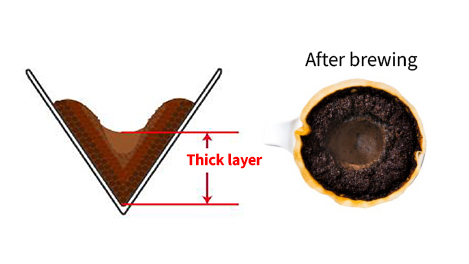
-
Full Immersion
<Pouring all at once>
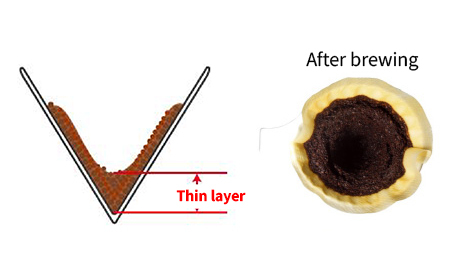
Pouring in batches
When water is poured in batches, a pressure balance equilibrium is maintained inside the filter. This allows a thicker layer of coffee powder to form, which helps the water spread more evenly across the coffee bed. As a result, diffusion by the concentration gradient allows good coffee ingredients to be fully extracted.
Pouring all at once
When pouring all water at once, the water level rises too high and the pressure balance equilibrium in the filter is disrupted, so a thick layer is not formed. This can weaken the diffusion process caused by the concentration gradient, leading to less effective extraction.
**first half**
**second half**